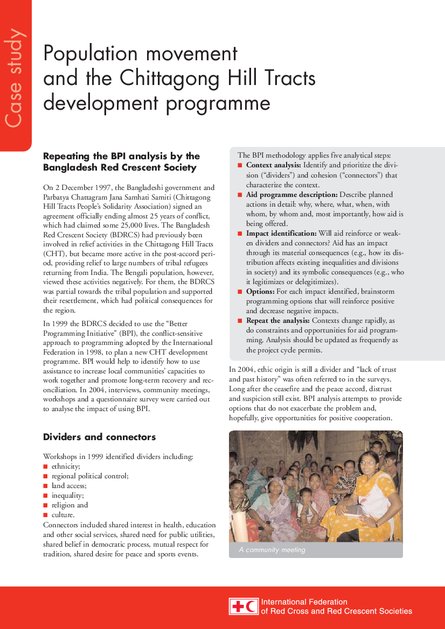
On 2 December 1997, the Bangladeshi government and Parbatya Chattagram Jana Samhati Samiti (Chittagong Hill Tracts People’s Solidarity Association) signed an agreement officially ending almost 25 years of conflict, which had claimed some 25,000 lives. The Bangladesh Red Crescent Society (BDRCS) had previously been involved in relief activities in the Chittagong Hill Tracts (CHT), but became more active in the post-accord period, providing relief to large numbers of tribal refugees returning from India. The Bengali population, however, viewed these activities negatively. For them, the BDRCS was partial towards the tribal population and supported their resettlement, which had political consequences for the region. In 1999 the BDRCS decided to use the “Better Programming Initiative” (BPI), the conflict-sensitive approach to programming adopted by the International Federation in 1998, to plan a new CHT development programme. BPI would help to identify how to use assistance to increase local communities’ capacities to work together and promote long-term recovery and reconciliation. In 2004, interviews, community meetings, workshops and a questionnaire survey were carried out to analyse the impact of using BPI.